
# 3220 - 1998 32c Spanish Settlement of the South
1998 32¢ Spanish Settlement
City: New York, NY
Quantity: 250,000,000
Printed By: Banknote Corporation of America
Printing Method: Lithographed
Perforations: Die Cut 11.3
Color: Multicolored
Arches National Park
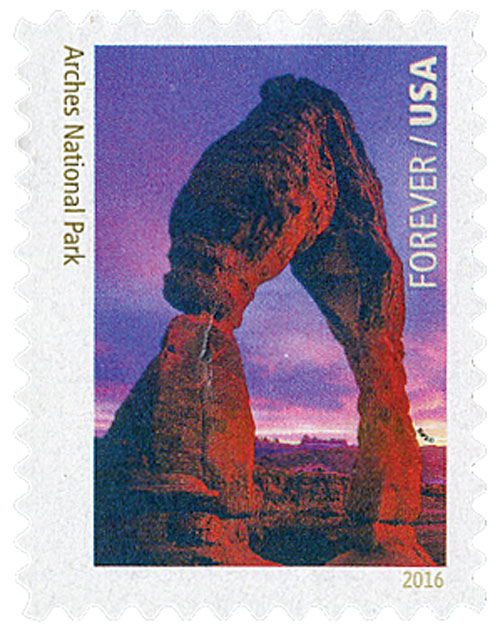
Arches National Monument was established on April 12, 1929. Made into a national park in 1971, its home to more than 2,000 natural sandstone arches. That makes it the highest density of natural arches in the world.
The story of the park’s famous arches begins some 300 million years ago, when the area was covered in water. Below the water, a salt bed built up. After the sea evaporated, millions of years of debris built up on top of the salt bed, eroded and was blown over from a nearby uplift. Eventually, the weight of all the rock on the surface caused the salt bed below to turn to liquid. The liquid then pushed up layers of rock, turning them into salt domes.
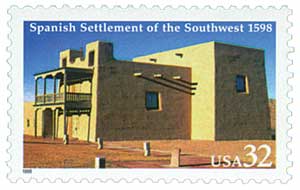
As erosion wore away top layers of rock, water seeped into cracks, joints, and folds. When temperatures dropped, ice formed, the rock expanded, and pieces broke off. Wind and water then took their toll on these “fins,” causing several to collapse. However, many survived, losing their middle section in the process, leaving the arches which remain today. The effects that formed these arches continue to work today, so each one is only temporary and will someday crumble.
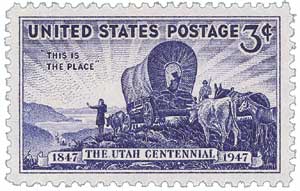
Some of the earliest visitors to the area now known as Arches National Park were hunter-gatherers, arriving about 10,000 years ago at the end of an Ice Age. About 2,000 years ago, nomadic hunters, known as ancestral Puebloans, settled in the Four Corners area and may have lived seasonally near the arches. As they began to leave the area about 700 years ago, they crossed paths with arriving Ute and Paiute, who then settled there.

The first Europeans to enter the area were the Spanish, around 1775. They did interact with the Ute and Paiute, who likely helped them route parts of their Old Spanish Trail. The first attempt at permanently settling the area came in June 1855. A group of 41 Mormons built a fort to serve as the Elk Mountain Mission, trading with travelers and baptizing the natives. However, conflicts with the Ute forced the missionaries to flee the area after just three months. It would be over 20 years before the area was permanently settled by a mix of ranchers, prospectors, and farmers.
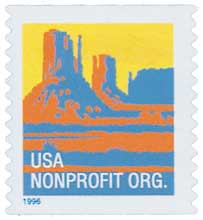
Over the next few decades, the area around Arches continued to build up. The town of Moab (of which the park is a part) was home to Loren “Bish” Taylor, one of the earliest proponents of establishing a national park there. In 1911, at the age of 18, he took over the local newspaper and regularly published articles detailing the beauty and marvels of the nearby arches.
Over time, Taylor’s articles captured local attention, particularly prospector Alexander Ringhoffer. In 1923, Ringhoffer convinced the Rio Grande Western Railroad that the area could be a tourist destination, which would mean more customers for their railroad. With their support, the campaign for Arches National Park began. Researchers visited the area to decide if it was worthy of park protection.
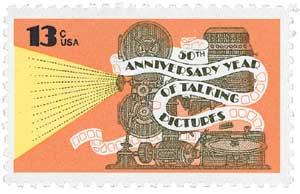
With the researchers’ approval, Herbert Hoover established Arches National Monument on April 12, 1929. The monument consisted of about 4,500 acres in two sections. Though the area was protected, little was done to develop it until nine years later. President Franklin Roosevelt signed a proclamation expanding the monument to include several more scenic features. Roosevelt’s Civilian Conservation Corps established their camp in Arches in March 1940. Though they were only there a few short years, they completed several large projects. However, their work was quickly brought to a halt after the US entered World War II. Their camp was one of the last in the nation closing in March 1942.
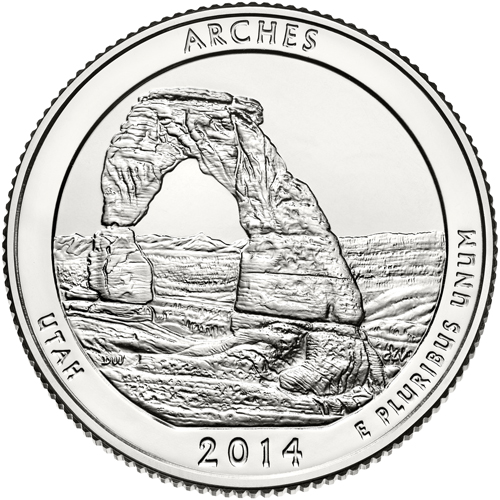
After the war, work resumed at Arches, particularly when Bates Wilson took over as custodian and superintendent in 1949. He helped improve the park’s roads, campgrounds, and visitors center. In 1969, Lyndon B. Johnson expanded the park dramatically. And on November 12, 1971, President Richard Nixon established Arches as a national park.
1998 32¢ Spanish Settlement
City: New York, NY
Quantity: 250,000,000
Printed By: Banknote Corporation of America
Printing Method: Lithographed
Perforations: Die Cut 11.3
Color: Multicolored
Arches National Park

Arches National Monument was established on April 12, 1929. Made into a national park in 1971, its home to more than 2,000 natural sandstone arches. That makes it the highest density of natural arches in the world.
The story of the park’s famous arches begins some 300 million years ago, when the area was covered in water. Below the water, a salt bed built up. After the sea evaporated, millions of years of debris built up on top of the salt bed, eroded and was blown over from a nearby uplift. Eventually, the weight of all the rock on the surface caused the salt bed below to turn to liquid. The liquid then pushed up layers of rock, turning them into salt domes.

As erosion wore away top layers of rock, water seeped into cracks, joints, and folds. When temperatures dropped, ice formed, the rock expanded, and pieces broke off. Wind and water then took their toll on these “fins,” causing several to collapse. However, many survived, losing their middle section in the process, leaving the arches which remain today. The effects that formed these arches continue to work today, so each one is only temporary and will someday crumble.

Some of the earliest visitors to the area now known as Arches National Park were hunter-gatherers, arriving about 10,000 years ago at the end of an Ice Age. About 2,000 years ago, nomadic hunters, known as ancestral Puebloans, settled in the Four Corners area and may have lived seasonally near the arches. As they began to leave the area about 700 years ago, they crossed paths with arriving Ute and Paiute, who then settled there.

The first Europeans to enter the area were the Spanish, around 1775. They did interact with the Ute and Paiute, who likely helped them route parts of their Old Spanish Trail. The first attempt at permanently settling the area came in June 1855. A group of 41 Mormons built a fort to serve as the Elk Mountain Mission, trading with travelers and baptizing the natives. However, conflicts with the Ute forced the missionaries to flee the area after just three months. It would be over 20 years before the area was permanently settled by a mix of ranchers, prospectors, and farmers.

Over the next few decades, the area around Arches continued to build up. The town of Moab (of which the park is a part) was home to Loren “Bish” Taylor, one of the earliest proponents of establishing a national park there. In 1911, at the age of 18, he took over the local newspaper and regularly published articles detailing the beauty and marvels of the nearby arches.
Over time, Taylor’s articles captured local attention, particularly prospector Alexander Ringhoffer. In 1923, Ringhoffer convinced the Rio Grande Western Railroad that the area could be a tourist destination, which would mean more customers for their railroad. With their support, the campaign for Arches National Park began. Researchers visited the area to decide if it was worthy of park protection.

With the researchers’ approval, Herbert Hoover established Arches National Monument on April 12, 1929. The monument consisted of about 4,500 acres in two sections. Though the area was protected, little was done to develop it until nine years later. President Franklin Roosevelt signed a proclamation expanding the monument to include several more scenic features. Roosevelt’s Civilian Conservation Corps established their camp in Arches in March 1940. Though they were only there a few short years, they completed several large projects. However, their work was quickly brought to a halt after the US entered World War II. Their camp was one of the last in the nation closing in March 1942.

After the war, work resumed at Arches, particularly when Bates Wilson took over as custodian and superintendent in 1949. He helped improve the park’s roads, campgrounds, and visitors center. In 1969, Lyndon B. Johnson expanded the park dramatically. And on November 12, 1971, President Richard Nixon established Arches as a national park.











